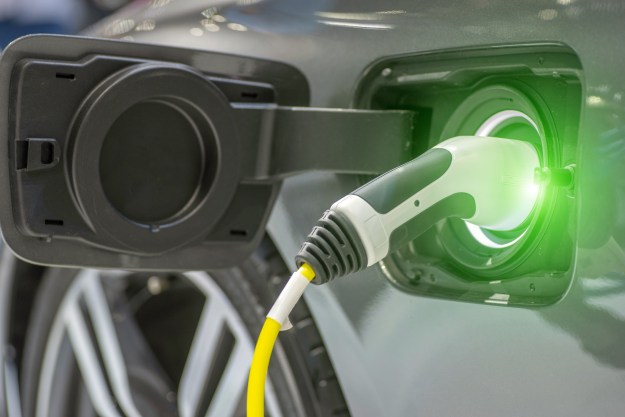This story is part of our continuing coverage of CES 2020, including tech and gadgets from the showroom floor.
EVs are everywhere at CES 2020, but the stations that charge them are are seldom worthy of your attention. Typically, they’re simply utilitarian plastic boxes with rubber cables trailing out of them. The best they can do is stay out of the way and quietly fuel up the real stars of the show.
That’s not the case with the new Wallbox Quasar, unveiled at CES 2020. First, it’s probably the only EV charger that qualifies as “attractive.” Second, it allows your car to power your house. Yes, your EV has enough juice to run your house.
While the Quasar isn’t the first bidirectional charger on the market, it’s one of very few right now, and the first designed for residential use. That means that when the power goes out, the EV sitting in your driveway suddenly becomes a backup battery on wheels, keeping your TV running, your Wi-Fi live, and your refrigerator cold.

If that sounds like a quick way to drain your EV and strand yourself at home with no power, you may be surprised how far an EV’s “tank” can stretch in the home setting. The average American household uses about 29 kilowatt hours of electricity per day, and a battery like the one in Tesla’s Model Y Long Range packs in 74 kilowatt hours. That means you could power your home for two days straight without flinching, and probably many more by dialing back usage.
Consider other possibilities. If you have solar panels on your roof that generate more electricity than you can use, you can bank them in your EV and draw them out at night when the sun doesn’t shine. If you live in an area that prices electricity lower at night, you can fill your car at night and run your house from it during the day. In Portland, Oregon, where Digital Trends is headquartered, you pay 12.6 cents for a kilowatt of electricity during the day and 4.2 cents at night.
There is one major catch, though: You can’t use the Quasar with the Model Y right now. Or the Chevy Volt. Or the Ford Mach E, for that matter. Unfortunately, you can use it with only three cars: The Nissan Leaf, the Nissan e-NV200, and the Mitsubishi Outlander.
That’s because only these Japanese EVs support the relatively uncommon CHAdeMO charging standard the Quasar uses and is the only charging standard that supports bidirectional charging right now. While Tesla is working on a communication standard for its proprietary chargers that would allow them to also support bidirectional charging, Wallbox suggested it would be at least 2021 until it’s ironed out.
So no, you probably don’t need to run out and spend $4,000 on the Wallbox Quasar when it comes out later this year. And Wallbox says the bidirectional charging won’t be live at launch anyway — it will be added on later. But it’s still a glimpse at the grid of the future — and a sharp-looking one at that.
Follow our live blog for more CES news and announcements.
Editors' Recommendations
- Why your EV’s voltage matters, and what it means for your car’s charging speed
- I just installed my own EV charger. Here are 6 things to know first
- Beware of this EV with pitiful charging speed — and others like it
- The Sony Honda Afeela car is peak CES, and I’m totally here for it
- Amazon Alexa aims to streamline the EV charging experience


